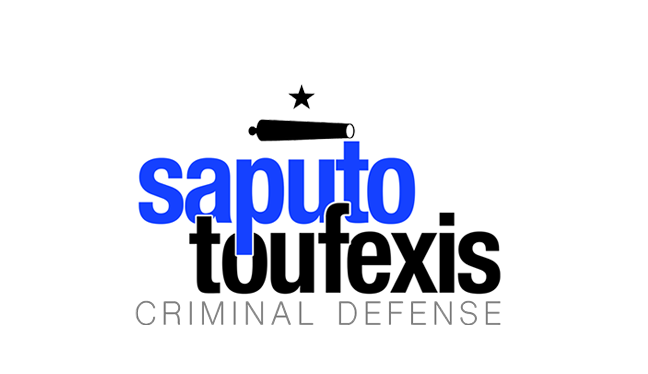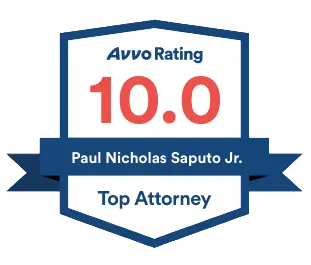The Texas Cruelty to Nonlivestock Animals law gives police the right to arrest you if they believe you tortured, injured, killed, abandoned, neglected, or engaged in any of several other listed abuses of any domesticated living creature, except for livestock animals or captured wildlife.
FAQs about the
Cruelty to Nonlivestock Animals law in Texas
- What is the current Texas law about Cruelty to Nonlivestock Animals?
- What is the penalty for a Texas Cruelty to Nonlivestock Animals offense?
- What changed in 2023?
- What changed in 2025?
- How can I be charged with a Cruelty to Nonlivestock Animals offense in Texas?
- What is the statute of limitations for Cruelty to Nonlivestock Animals in Texas?
- Can you get probation for Cruelty to Nonlivestock Animals in Texas?
- What level of crime is Cruelty to Nonlivestock Animals in Texas?
The legislature made several changes to this law in both the 2017 and 2023 legislative sessions. In 2017, the legislature amended this law by adding some penalty enhancements, and in 2023, the legislature added a defense to prosecution for a “Trap-Neuter-Return Program.”
Have you been charged with Cruelty to Nonlivestock Animals? Contact us today to discuss legal representation.
or Text or Call (888) 239-9305
Cruelty to Nonlivestock Animals cases frequently involve sick or dead animals. As a result, these cases often involve the opinions of veterinarians. Similar to this offense, the Cruelty to Livestock Animals offense applies to livestock animals.
The legislature made additional changes in 2025, adding “with criminal negligence” to the mental states in §42.092(b) and creating a defense to prosecution for alleged criminal negligence for licensed veterinarians and their assistants acting in the actual discharge of their duties; these changes apply only to offenses committed on or after September 1, 2025.
The Cruelty to Nonlivestock Animals offense also covers causing animals to fight each other, but the two most common types of fighting animals, Dog Fighting and Cockfighting, each have their own distinct penal code section that prosecutors may use to obtain convictions.
The legislature codified this criminal offense in Texas Penal Code Section 42.092
The Penal Code classifies the Texas Cruelty to Nonlivestock Animals law under Title 9 “Offenses Against Public Order and Decency,” Chapter 42 “Disorderly Conduct and Related Offenses.” Learn more about the Texas offense of Cruelty to Nonlivestock Animals below.
What is the current Texas law about Cruelty to Nonlivestock Animals?
AV Preeminent Texas lawyer Paul Saputo provides the current law defining Cruelty to Nonlivestock Animals in Penal Code Section §42.092, as follows:[1]
(b) A person commits an offense if the person intentionally, knowingly, recklessly, or with criminal negligence:
(1) tortures an animal or in a cruel manner kills or causes serious bodily injury to an animal;
(2) without the owner’s effective consent, kills, administers poison to, or causes serious bodily injury to an animal;
(3) fails unreasonably to provide necessary food, water, care, or shelter for an animal in the person’s custody;
(4) abandons unreasonably an animal in the person’s custody;
(5) transports or confines an animal in a cruel manner;
(6) without the owner’s effective consent, causes bodily injury to an animal;
(7) causes one animal to fight with another animal, if either animal is not a dog;
(8) uses a live animal as a lure in dog race training or in dog coursing on a racetrack; or
(9) seriously overworks an animal.
For conduct before September 1, 2025, §42.092(b) required that the actor act intentionally, knowingly, or recklessly – the “criminal negligence” language and the defense to prosecution for alleged criminal negligence by licensed veterinarians or their assistants apply only to conduct committed on or after that date.[2]
What is the penalty for a Texas Cruelty to Nonlivestock Animals offense?
If the offense falls under subsection (b)(3), (4), (5), (6), or (9), then a conviction for Cruelty to Nonlivestock Animals is punished by default as a Class A misdemeanor,[3] with a maximum possible fine under Texas state law of up to $4,000 and jail time of up to one year.
However, if the offense falls under one of those subsections, and you have been convicted of this offense or Cruelty to Livestock Animals two or more times, then a conviction for Cruelty to Nonlivestock Animals in Texas is punished as a state jail felony,[4] with a maximum possible fine under Texas state law of up to $10,000 and state jail time of up to two years.
Effective through September 1, 2017
Effective through September 1, 2017, if the offense falls under subsection (b)(1), (b)(2), (b)(7), or (b)(8), then a conviction for Cruelty to Nonlivestock Animals is punished by default as a state jail felony,[5] which involves a maximum state jail sentence of up to two years.
But if the offense falls under one of those subsections, (b)(1), (b)(2), (b)(7), or (b)(8), and you have been convicted of this offense or Cruelty to Livestock Animals two or more times, then a conviction for Cruelty to Nonlivestock Animals in Texas is punished as a third degree felony,[6] with a maximum prison sentence of up to 10 years.
The enhancements effective in 2017
Effective September 1, 2017, Cruelty to Nonlivestock Animals convictions under subsections (b)(1) or (b)(2) are classified as felonies of the third degree, except that the offense is a felony of the second degree if the person has previously been convicted under Subsection (b)(1), (b)(2), (b)(7), or (b)(8) or under Section 42.09 (Cruelty to Livestock Animals).[7] Subsection (b)(7) or (8) convictions are classified as state jail felonies except that the offense is a third degree felony if the person has previously been convicted under this section or under Section 42.09.[8]
What changed in 2023?
In 2023, the Legislature created defenses to prosecution for people involved in a “Trap-Neuter-Return Program”—which is a type of nonlethal population control practice in which animals are treated and sterilized by a veterinarian before being released back into the wild or trap location.[9] – which is a type of nonlethal population control practice in which animals are treated and sterilized by a veterinarian before being released back into the wild or trap location.[10]
What changed in 2025?
In 2025, the legislature (1) added “with criminal negligence” to the mental states in §42.092(b) and (2) created a defense to prosecution for alleged criminal negligence for licensed veterinarians and their assistants when the conduct occurred during the actual discharge of veterinary duties.[11] These changes apply only to offenses committed on or after September 1, 2025.[12]
How can I be charged with a Cruelty to Nonlivestock Animals offense in Texas?
You can be charged with Cruelty to Nonlivestock Animals in Texas if the state’s attorneys believe that each of the elements of §42.092(b) as described in the section above have been met, noting that “criminal negligence” is included among the mental states only for conduct occurring on or after September 1, 2025.
What is the statute of limitations for Cruelty to Nonlivestock Animals in Texas?
Misdemeanor level Cruelty to Nonlivestock Animals charges have a two-year limitations period.[13] Felony level offenses follow the default felony limitations period rule, which specifies a three-year limitations period.[14]
Can you get probation for Cruelty to Nonlivestock Animals in Texas?
The Texas Code of Criminal Procedure allows both judges and juries to grant probation for Cruelty to Nonlivestock Animals, and judges are also allowed to accept deferred adjudication plea deals.[15]
Note, however, that no matter the offense, neither judges nor juries may recommend community supervision for any suspended sentence of over 10 years.[16] Also, judges may not grant community supervision after a conviction if (1) the defendant used or exhibited a deadly weapon during the commission of the felony or immediate flight thereafter and (2) the defendant used or exhibited the deadly weapon himself or was a party to the offense and knew that a deadly weapon would be used or exhibited.[17]
What level of crime is Cruelty to Nonlivestock Animals in Texas?
The classification for the Cruelty to Nonlivestock Animals offense ranges from a Class A misdemeanor to a third degree felony, depending on the circumstances.
Learn more about the penalty range for this offense in the section above.
Legal References:
^1. Texas Penal Code §42.092. This law is current as of 2025.^2. Texas Penal Code §42.092(b), (d-1), as amended by HB 285, 89th Legislature (RS), Section 1, Sections 2–3^3. Texas Penal Code §42.092(c)^4. Texas Penal Code §42.092(c)^5. Texas Penal Code §42.092(c)^6. Texas Penal Code §42.092(c)^7. Texas Penal Code §42.092(c-1), as enacted by SB 762, 85th Legislature (RS), Section 1, effective September 1, 2017^8. Texas Penal Code §42.092(c-2), as enacted by SB 762, 85th Legislature (RS), Section 1, effective September 1, 2017^9. Texas Penal Code §42.092(e-1) and (e-2), as enacted by HB 3660, Section 2^10. Texas Penal Code §42.092(a)(9)^11. Texas Penal Code §42.092(b), (d-1), as amended by HB 285, 89th Legislature (RS), Section 1^12. HB 285, 89th Legislature (RS), Sections 2–3^13. Code of Criminal Procedure 12.02(a)^14. See Code of Criminal Procedure 12.01(11)^15. See Chapter 42A, Texas Code of Criminal Procedure, Art. 42A.054, Art. 42A.056, Art. 42A.102^16. Art. 42A.053(c), Texas Code of Criminal Procedure^17. Art. 42A.054(b), Texas Code of Criminal Procedure










